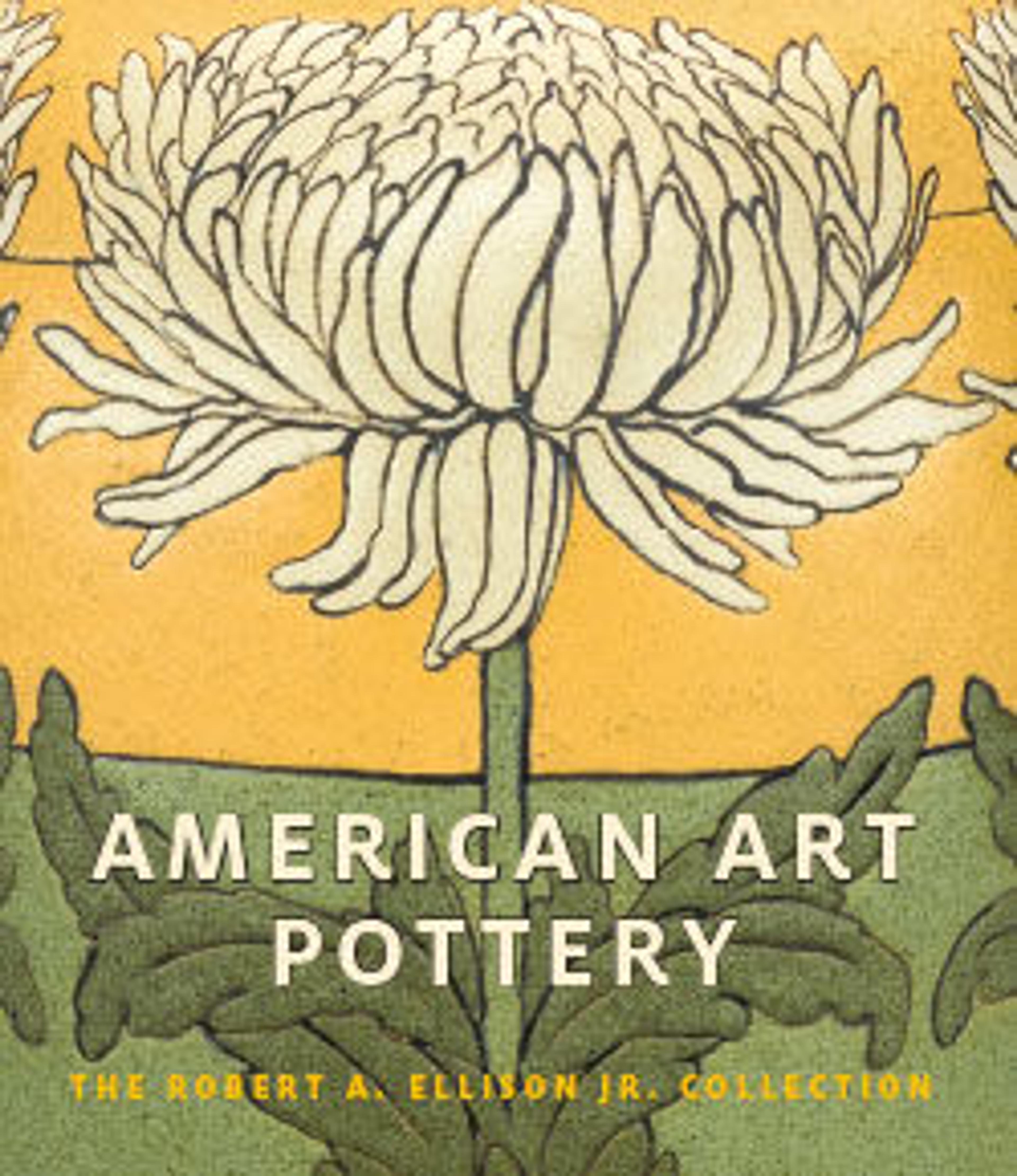Oxen
William H. Grueby (1867–1925), perhaps more than any other individual ceramist, directed the course of American pottery toward matte glazes at the turn of the century. The glazes that he produced at his Boston pottery, founded in 1897, were described as a “very dull mat,” others as having a “crackled effect running all through it under the glaze,” or, alternatively, “mottled wave lines running around the surface.” Gray, dappled green, pale green, warm brown, and a mottled silvery yellow were some of the colors enumerated in the period press, but a dark green soon became the predominant color associated with the pottery. Grueby partnered with the architect George Prentice Kendrick, who provided the designs for most of the vases made by the pottery.
Concurrent with its vase production, the Grueby firm produced tiles. Indeed, this was probably the major portion of their commercial business. Much of the output was devoted to plain glazed tiles in stock patterns that architects incorporated into their commissions. After 1900 the company devoted its attention to producing tiles with Arts and Crafts-style designs that complemented the firm’s richly colored matte glazes. For architectural commissions, such as New York City’s subway stations, the architects Kendrick and Addison B. LeBoutellier assumed a major role in designing the tiles.
Among the most notable of Grueby’s tiles are the pictorial friezes that were frequently shown in American Arts and Crafts exhibitions. This one depicts a farm wagon driven by a team of four oxen and accompanied by the farmer. Although smaller, it is nearly identical to a Grueby tile frieze that was created around 1902 for the mantel in the nursery at Dreamwold Estate, the impressive farm house of Thomas W. Lawson in Scituate, Massachusetts, where all the rooms had Grueby tiles. The subject undoubtedly reflected the owner’s particular tastes; Lawson had a special herd of Jersey cattle. The frieze has a charming, rustic simplicity, which may explain why Grueby put the design into production and why other clients bought it on purely artistic grounds.
Concurrent with its vase production, the Grueby firm produced tiles. Indeed, this was probably the major portion of their commercial business. Much of the output was devoted to plain glazed tiles in stock patterns that architects incorporated into their commissions. After 1900 the company devoted its attention to producing tiles with Arts and Crafts-style designs that complemented the firm’s richly colored matte glazes. For architectural commissions, such as New York City’s subway stations, the architects Kendrick and Addison B. LeBoutellier assumed a major role in designing the tiles.
Among the most notable of Grueby’s tiles are the pictorial friezes that were frequently shown in American Arts and Crafts exhibitions. This one depicts a farm wagon driven by a team of four oxen and accompanied by the farmer. Although smaller, it is nearly identical to a Grueby tile frieze that was created around 1902 for the mantel in the nursery at Dreamwold Estate, the impressive farm house of Thomas W. Lawson in Scituate, Massachusetts, where all the rooms had Grueby tiles. The subject undoubtedly reflected the owner’s particular tastes; Lawson had a special herd of Jersey cattle. The frieze has a charming, rustic simplicity, which may explain why Grueby put the design into production and why other clients bought it on purely artistic grounds.
Artwork Details
- Title:Oxen
- Manufacturer:Grueby Pottery (Boston, Massachusetts, 1899–ca. 1911)
- Designer:Addison B. Le Boutellier (1872–1951)
- Date:ca. 1902–5
- Geography:Made in Boston, Massachusetts, United States
- Culture:American
- Medium:Earthenware
- Dimensions:12 x 47 13/16 in. (30.5 x 121.4 cm)
- Credit Line:Gift of Robert A. Ellison Jr., 2017
- Object Number:2017.357.1a–e
- Curatorial Department: The American Wing
More Artwork
Research Resources
The Met provides unparalleled resources for research and welcomes an international community of students and scholars. The Met's Open Access API is where creators and researchers can connect to the The Met collection. Open Access data and public domain images are available for unrestricted commercial and noncommercial use without permission or fee.
To request images under copyright and other restrictions, please use this Image Request form.
Feedback
We continue to research and examine historical and cultural context for objects in The Met collection. If you have comments or questions about this object record, please contact us using the form below. The Museum looks forward to receiving your comments.
